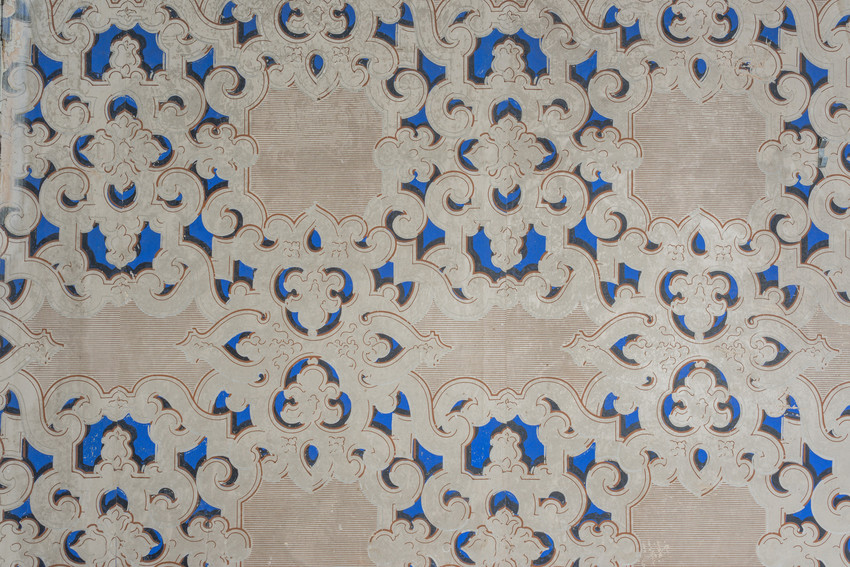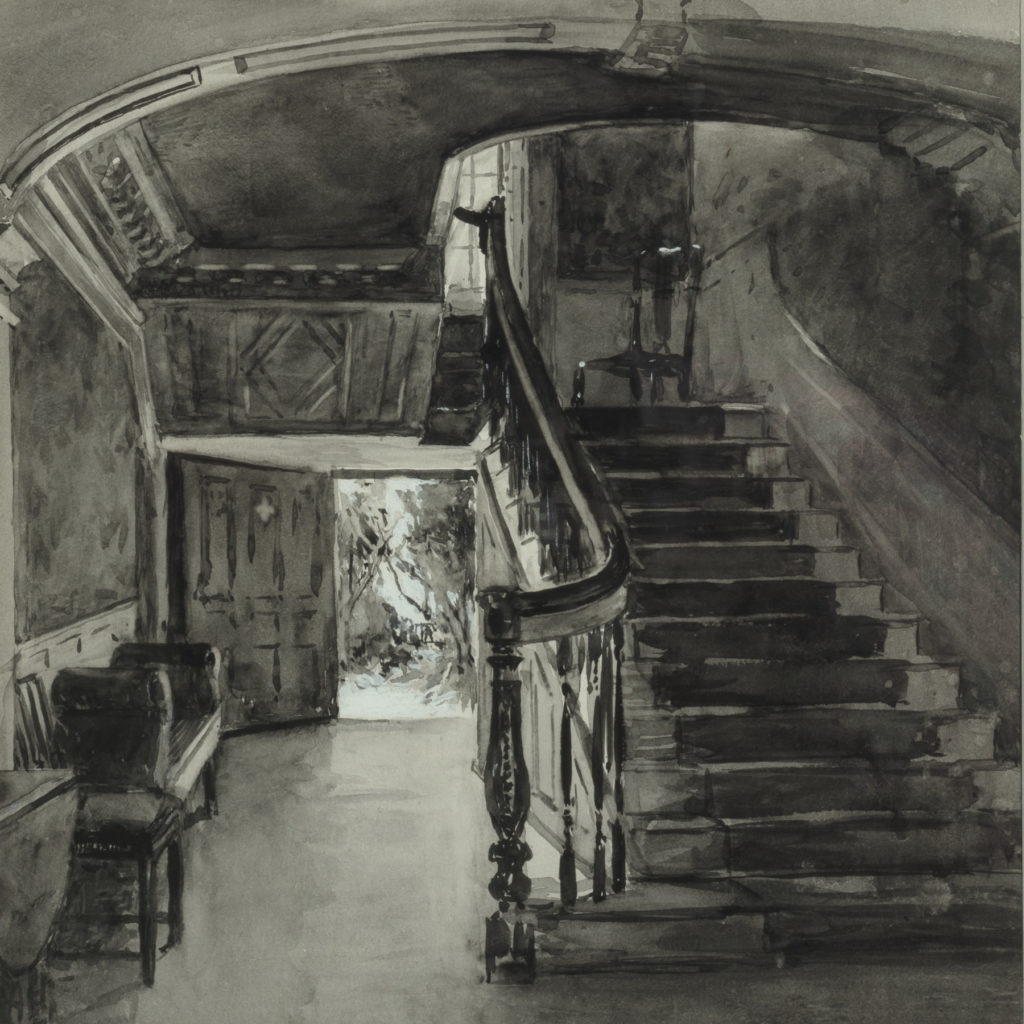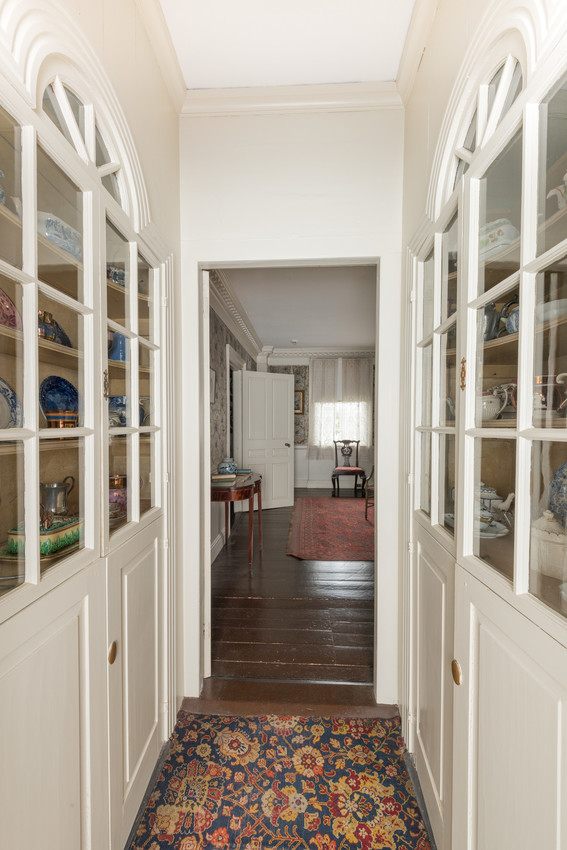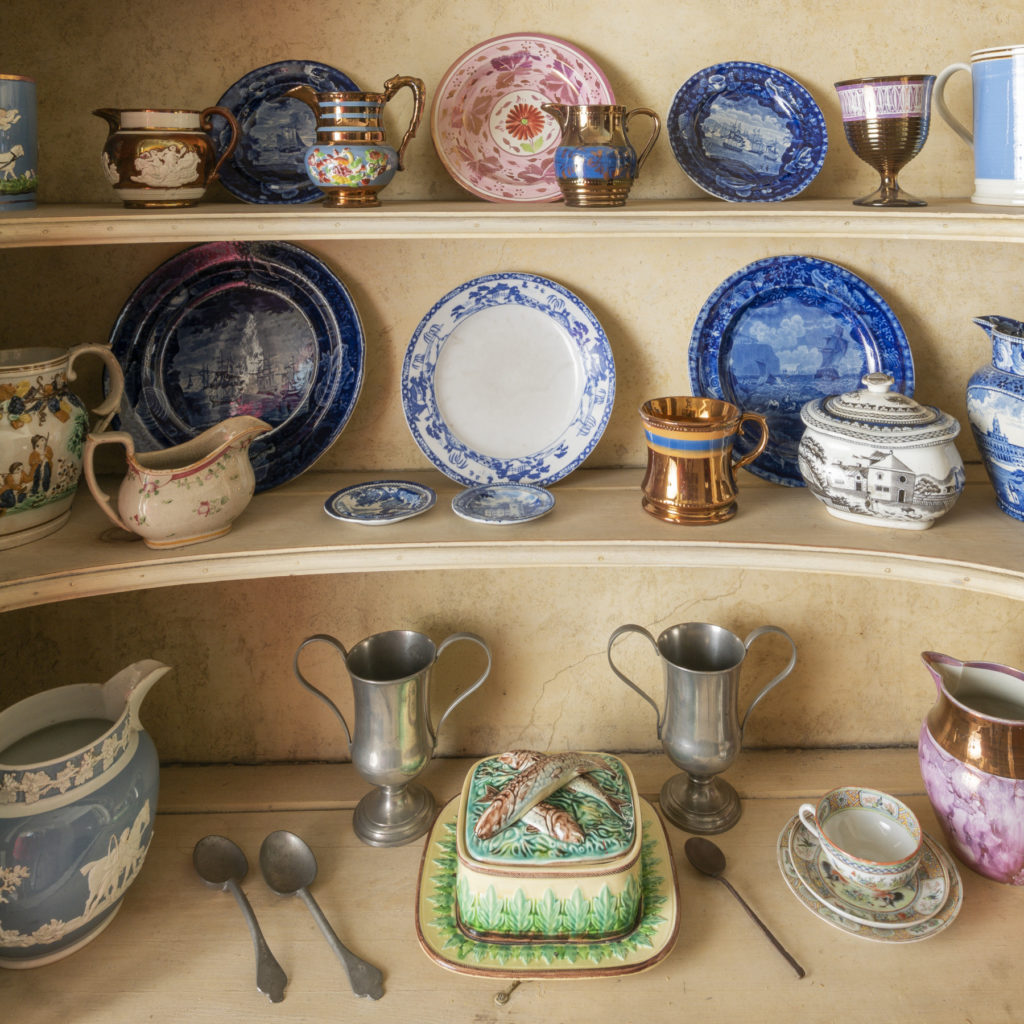 Sarah Orne Jewett House
Sarah Orne Jewett House
Dining Room

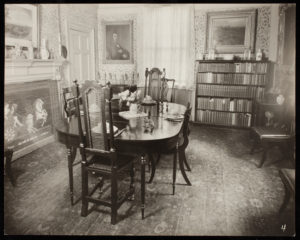
When Sarah Orne Jewett lived in the house with her sister this room was used as a dining room, and no doubt her grandfather used it the same way. However it’s hard to know how it was used when the house was built. Rooms reserved solely for the purpose of dining were very rare in the eighteenth century. This room may have served multiple purposes and been furnished with tables with folding leaves that were kept down when not in use, as well as side chairs, easy chairs, and perhaps even a desk.
Dining Room Wallpaper
The interlacing motif on this block-printed paper from France or the United States is known in architectural circles as strapwork. It’s often seen with faux shadow lines to mimic carved woodwork and create a sense of depth. In this example, probably put in around 1860, the paperhanger installed it upside down, overlooking the fact that the shadow lines are meant to suggest the paper is lit from above.
Inspiration: Deephaven
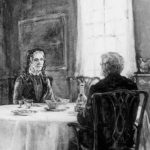
Sarah Orne Jewett’s first novel, Deephaven (1877), centers on the escapades of two friends, Kate Lancaster and Helen Denis, who summer together at a house Kate’s mother has inherited, in the town of Deephaven, Maine.
The character of Kate Lancaster is believed to be inspired by Jewett’s friend Kate DiCosta Birckhead, for whom Jewett appears to have had romantic longings.
Jewett was inspired to use the house of her birth as the model for the fictional manse, noting in the book details from the front hallway, dining room, library, and second floor rooms, including a pointed description of the wallpaper in the parlor chamber, later Mary’s room.
The novel was a success; a second edition was printed in 1894 with illustrations by Marcia Oakes Woodbury and Charles Woodbury. To have the illustrations created, Jewett invited the artist couple into her home to sketch. Pictured here is one of the Woodbury illustrations for the book. The drawing hangs in the dining room.
Owl
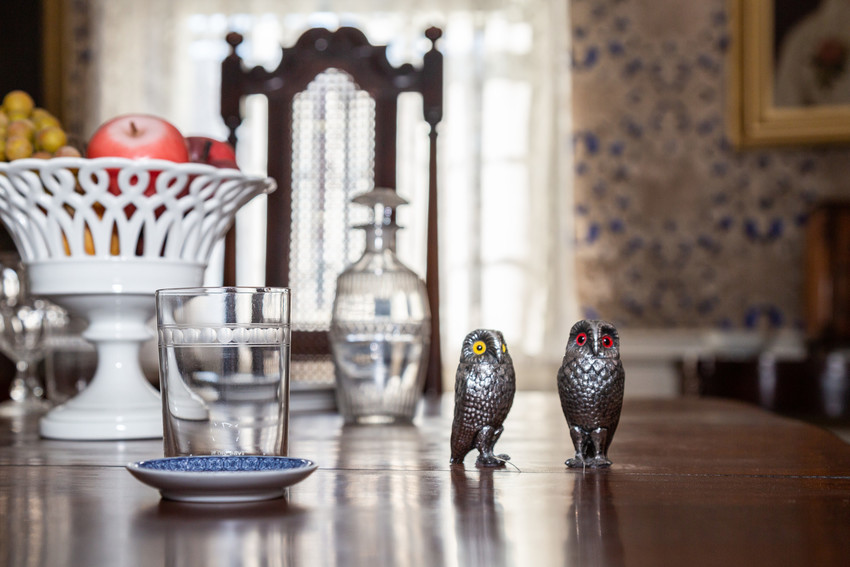
The salt and pepper shakers in the dining room are a reminder of Sarah’s nickname, “owl,” among her good friends. Celia Thaxter gave Jewett the nickname “owl,” and “owlet.” Annie Fields was “flower.”
The owl salt and pepper shakers in the dining room seem to have been present before Sarah’s friend gave her the nickname, however, as evidenced by a story Jewett published at the age of seventeen:
“The Pepper-owl expected attention, and began to feel cross because the children were hungry, and were so busy with their soup that they did not look beyond their own plates until they were empty, and did not stop eating for even one glance at him. “They are so impolite to strangers, these people!” said he to himself; but for all that, he kept his yellow eyes wide open, and his silver feathers glistened bravely. There was a tumbler near him, in which he could see himself, and that was a great pleasure.” Sarah Orne Jewett (“The Pepper Owl and the Fluffy Owl,” St. Nicholas Magazine, 1876)
Decanter Set
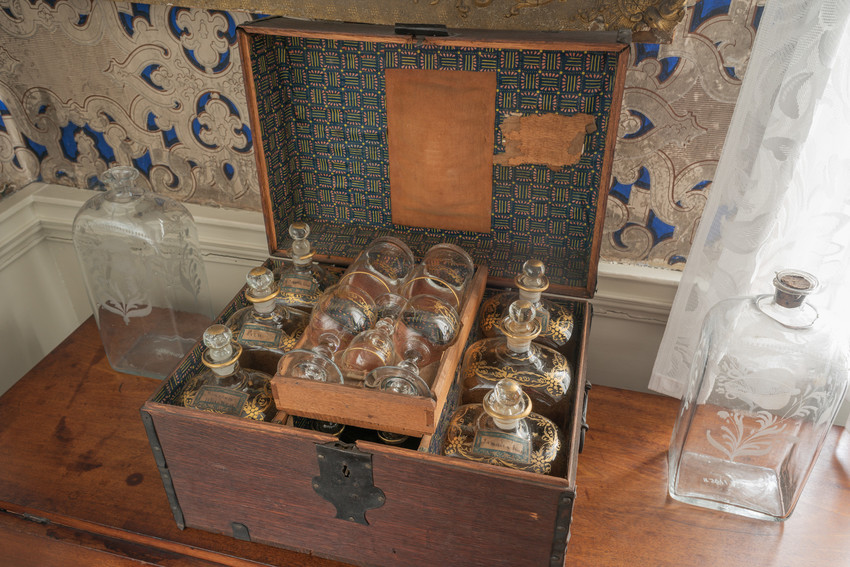
It’s not hard to imagine that a traveling liquor case like this one would come in handy. Even when not traveling, some people no doubt found it useful to lock up their spirits to keep them safe from children or servants.
China Closets
Dining Room Closet
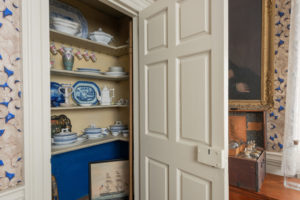
A mish mash of contents in the dining room closet and passageway between the parlor and dining room suggests the types of goods a family accumulates when multiple generations have lived in the same house.
This coffeepot is made of a ceramic known as Ironstone. Originally patented in England in 1813, Ironstone wares were highly valued both in England and America for their whiteness and durability. This example with its paneled body and decorative D-shaped handle was probably made around 1850.
As soon as direct trade opened with China after the Revolutionary War, astonishing quantities of blue and white porcelain dinner wares made their way into American households. This platter, in a style known as Canton, is typical of the pieces that flooded the market in the first half of the nineteenth century.
The watercolor showing the ship Nereus, named after the Greek God of the Sea, reminds us of the centrality of shipping to the lives of New Englanders. Indeed Sarah’s beloved grandfather had run away to the sea as a young boy, eventually becoming a ship captain.
Decorative tin household goods like this tray and the one on the shelf above it were ubiquitous in 19th century households. The gold stenciling on a black ground mimics the ornamental lacquerwares that were imported from China.
to learn more
